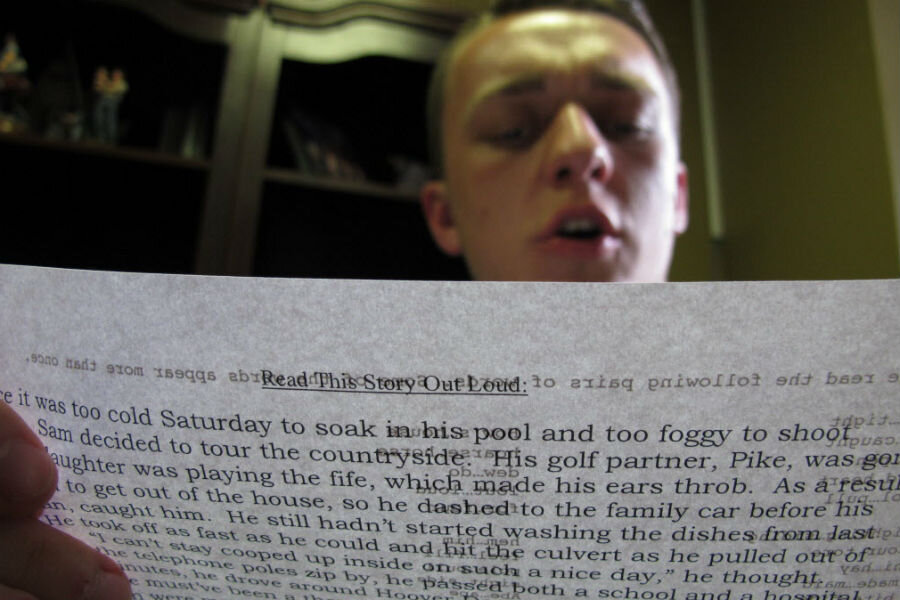Stereotype or source of pride? 'Hillbilly' dialect makes comeback in Appalachia
Loading...
After years of association with "The Beverly Hillbillies," Appalachian people are taking back their dialect.
"There can be no doubt that it's the most heavily stigmatized regional speech in the country," South Carolina author Michael B. Montgomery told National Geographic. "I can't think of any other region where five words out of somebody's mouth will completely affect another person's evaluation of their intelligence, their reliability, their truthfulness, and their ability to handle complex tasks.”
It may be subject to negative stereotypes, but the Appalachian dialect is slowly but surely becoming a source of pride for many native speakers, thanks to a surge of programs intended to give young mountain people pride in their linguistics.
For years, Appalachians have been self-conscious about their speech patterns thanks to mainstream pop culture characters embodying an impoverished, illiterate "hillbilly" stereotype, Montgomery says.
Now, programs are popping up all over the region to help combat this stigma. Amy D. Clark is the founder of the Appalachian Writing Project, which conducts workshops for rural teachers to help them teach students to write effectively without making them feel self-conscious about their speech. She says the internalization of the negative stereotypes attached to Appalachian dialect can have a harmful effect on students learning to write.
Methods used by Ms. Clark and the teachers she works with include contrastive analysis, an approach in which students diagram spoken sentences and compare them to formal written English. Lizbeth Phillips, a middle school teacher in southwest Virginia, makes her students keep journals documenting how adults in their community switch between formal and casual ways of speaking.
Phillips stresses to her students the importance of not forsaking their spoken language, and tries to reflect these values in her teaching.
"If you're marching out the red pen ... you're really criticizing their culture and their family heritage and other things. It's not just about standardizing the language," she told The Associated Press.
A similar encouragement of cultural pride can be found in West Virginia and North Carolina middle schools, where teaching units have been implemented in recent years to focus on the history of each state's dialects.
Linguist Kirk Hazen of West Virginia University, who worked with colleagues to develop these teaching units, has spent the past two decades recording dozens of interviews around West Virginia to analyze speech patterns. He hopes that through better understanding the cultural context, Appalachia residents will be able to more fully embrace their dialect.
Jordan Lovejoy, a student at West Virginia University who has assisted Hazen in his research, says the project has helped her to shed self-consciousness over her southern West Virginia accent.
“Naturally, I viewed my way of speaking negatively, but working with Kirk at the West Virginia Dialect Project has changed that. I am constantly paying close attention to the way people talk and how language is used, and I think it helps me understand folks and the world better," she told WVU Today.
The effect of these programs is measured in small victories, such as the cancellation of classes aimed at reducing workers' accents at the Oak Ridge National Laboratory in East Tennessee last year, which prompted a headline in Knoxville News-Sentinel reading: "ORNL bows to Southern pride."
This re-appropriation of the Appalachian dialect, which is characterized by features such as redundant pronouns ("My friend, he's really tall,") and the dropping of consonants such as "t" or "d" ("bes' friend" instead of "best friend"), is part of a larger Appalachian renaissance, says Walt Wolfram of North Carolina State University. This rebirth has also been observed in cultural trends – for example, the rising number of young people taking up “hillbilly” instruments like the banjo.
"It gives them a sense of pride,” Wolfram said. "They think it's cool. And it also makes them special. It contributes to the sort of cultural capital of kids who want to be from someplace, who want to have a strong heritage and want to be grounded.”








